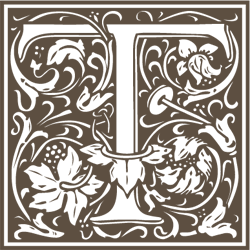After walking 112km in 5 days, Jas and I have arrived in Santiago de Compostela.
Many of the pilgrims have come from much, much farther away than I have. Jas, for example, started in Roncesvalles, on the boarder with France, 800km, 30 days ago. If that seems impressive, a man named Will recently lost one of his legs in an accident—and walked the same distance with a set of crutches. A man in his eighties, blind, walked with his two grown children. One incredible girl started walking 3 months ago from her home in southern Germany.
Why are all of these people walking to Santiago de Compostela? Obviously it is one of the best known Christian pilgrimage destinations, just as Mecca is a destination for Muslims. One would expect the religious dimension of the trail to be stronger, but I have been pleasantly surprised – I have not yet met anyone who I would characterize as pushily religious. The pilgrim rates of drinking, smoking, flirting, and falling in love seem to be near European norms. The Camino seems to be a good example of a post-religious phenomenon: following tradition, doing something different, striving for an inner goal—these seem to be the goals the pilgrims search.
FAQ for Santiago de Compostela
Q: What is Santiago de Compostela?
A: Santiago de Compostela is a city in northwestern Spain where legend holds that the body of Saint James, 3rd apostle to Jesus, is buried. The whole subject is treated in depth at the Wikipedia entry on Saint James.
Q: “Santiago” does not sound at all like “James”—where did this name come from?
A: Apparently in Latin James is Iacobus, over time Sant Iacobus became Santiago.
St. James the Moorslayer, one of the most valiant saints and knights the world ever had … has been given by God to Spain for its patron and protection.— Cervantes, Don Quixote
This is heady stuff guys! We´re talking miracles, we´re talking legends, we´re talking about the Holy Grail!
Even after my puny five days of walking, arriving at the city was quite impressive. As far as pilgrimage destinations go, I give it five stars. From the “Monte de Gozo” or “Peak of Joy” we first saw the city. In my dry, scholarly guide (which is awesome; we have started referring to it as “the book” with feigned trumpet fanfare) the authors permit themselves a little emotion for this moment:
“The group of students with whom we trekked to Compostela in 1974, although largely secular in outlook, reacted … as we spied the distant cathedral towers, most of us fell to our knees as tears welled up in our eyes.”
We needed to wade through a ring of ugly modern-ville (which my blistered feet did not appreciate) but soon enough we arrived at the old town. It is amazingly well preserved: narrow stone streets, stone buildings, stone fountains—and is quite large.
The final approach to the cathedral was through a tunnel. A busker played medieval music on bagpipes. We came into the square and saw the cathedral´s facade—a baroque monstrosity full of statues and appropriately covered with moss and looking very old. We sat in the square and stared at it, thinking about 1200 years of pilgrims doing the same.
After a time we began to meet other friends of my brother. On the ground in the center of the square the European council had laid a plaque speaking about the brotherhood of man and all that. It was quite cool.
Other activities of the past days:
European perpetual party! We got swept into a crowd of French folks. I had to translate for the Europeans. Ha ha ha—I laugh.
Catholic mass—anyone who is catholic must do this pilgrimage! It was very nice—they read off the names of the pilgrims who arrive each day—as we were saying, almost 500 per day in this time of the year, and Saint James” feast day is coming on the 25th. I am not catholic, but I cannot fail at times to be awed by the catholic church—its incredible age, its international nature, its wealth, financial and cultural, and the power it still retains.
Reading from “the book” and trying to learn more about these buildings, sculptures, traditions, and life.
Market day—thousands of little old ladies doing their shopping. It´s awesome to see the elderly people walking, living together in their wonderful city—it seems better than how it works in the US.
Now today we are leaving for “Finisterre”—the end of the western world for the Romans. It is 86 km further west and we are planning to arrive there in 3 days.
